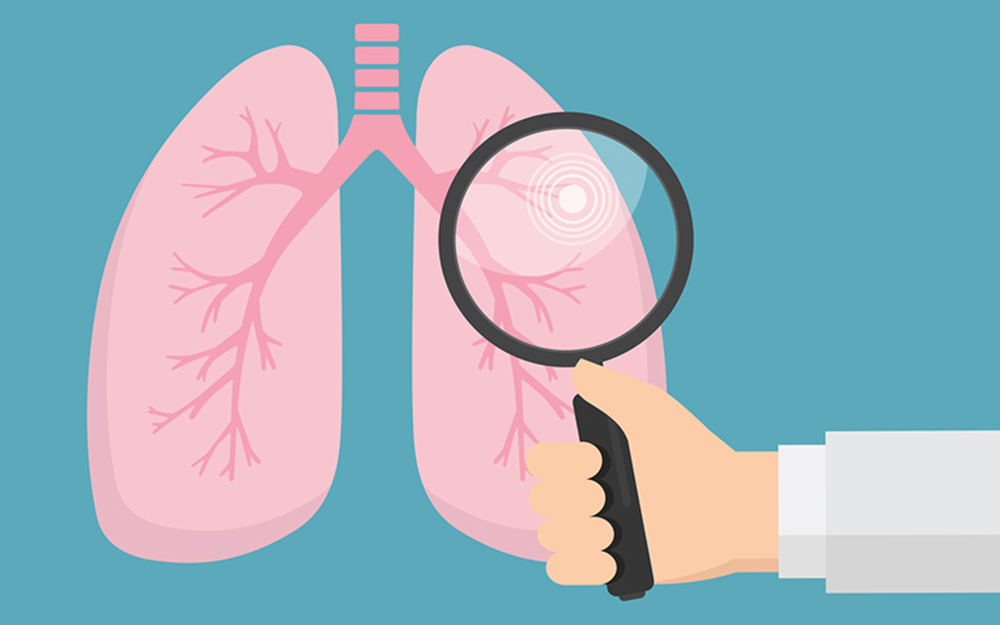Reported by program reporter Dirk l. Hudson
While the focus throughout recent times has been on the Covid Pandemic, there remain other illnesses also of mortal significance, such as the subject of Fridays presentation by City of Hope experts Jonjon Macalintal, DNP, CTTS [our speaker] and Sophia Yeung, MHA CTTS [ our displayer of illustrative diagrams]
Lung Cancer is the Number One Cause of U.S. Cancer deaths (42%), taking more lives annually than the top four cancers: colorectal (17 %), pancreas (16%). breast (14%), prostate (11%)
The average age at the time of diagnosis is about age 70.
Relation to smoking
Most of the risk is due to smoking and second-hand smoke. [ DLH Note: in answer to my question at the end of the presentation: this is not so much due to nicotine or cannibus, but due to other chemicals in cigarettes ]
or used any other form of tobacco Lung Cancer risk factors include: Smoking (80-90 % ). Followed by Second-hand smoke, radon gas exposure (e.g. in homes, schools, etc). radiation, asbestos, as well as genetics. Other factors include occupation, air pollution, other lung diseases, aging
The highest rate of smoking within Los Angeles County is within the Antelope Valley.
Lung cancer screening saves lives
Screening results in a 20 percent decrease in mortality rates (which are significantly higher in poor counties than in rich counties}.
According to CDC guidelines. The eligibility for such screening is highest among current smokers followed by former smokers, who smoked in the past 15 years.
Screening involves annual low dose computed tomography [X-ray] scans (i.e.”LDCT scans”| which provide a more detailed picture than does a standard chest X-ray
Disparate Impacts by Age. Gender, and Ethnicity
As ages increase so also does tobacco usage and lung cancer. Impacting males more than females.
As smoking levels increase so all does lung cancer incidence, the hardest hit being the black population, (followed by whites, Hispanics. Asians, e.g. Japanese-Americans and.Native Hawaiians ), mortality rates similarly increases.
Symptoms of Lung Cancer
Symptoms include a persistent cough, coughing up blood, persistent breathlessness, unexplained tiredness, chest ache or pain, and weight loss. Other symptoms include hoarseness, loss of appetite, trouble swallowing, facial or neck swelling. However, usually, symptoms of lung cancer don’t appear until the disease is already at an advanced, non-curable stage.
Types of Lung Cancer
Non-Small Cell Lung Cancer (NSCLE)
Types of Lung Cancer (top two of which are major)
1.Non-Small Cell Lung Cancer (NSCLC) 80 – 85 % of lung cancers are NSCLC
a. Adenocarcinoma – most common; 50 % are smokers
b. Squamous cell carcinoma – 25% of NSCLC cases – 25% are smokers
c, Large cell carcinoma – 25%of NSCLC cases – 90% are smokers
2. Small Cell Lung Cancer (SCLC) 10 – 15 % of lung cancers are SCLC
Almost 100% of SCLC cases are smokers
3,. Lung Carcinoma Tumor – fewer than 5% of lung cancer cases It grows slowly and is rarely spread
[note: lung nodules are either a spot or a shadow on the lung, some being caused by scar tissue or past infection, Nine out of 10 nodules are non-cancerous]
Treatment Options Per Stage of Lung Cancer development
- For Stage One (small tumors): treatment options include photodynamic therapy (SBRT). and/or ablation (i.e. erosion of tumor via radiofrequency . microwave and./or freezing [cryoablation])
2. For Stage Two (tumors enlarging or spreading to lymph nodes) treatment options include chemo, radiation radiation, and/or CT (computerized tomography)
3, For Stage Three (spreading to lymph nodes – on same or opposite side of chest) treatments include chemo, radiation, and (should the spread be the same side of the test) if possible surgery
4. For Stage Four (spreading to distant organs as a single tumor) , treatment options include chemo, targeted therapy, immunotherapy, radiation, clinical trials, palliative procedures, surgery (rare)
- Small cell lung cancer
Limited stage (cancer on one side of the lung only), treatment options include chemo, radiation, surgery (rare)
Extensive stage (spread to other side of the lungs or to distant organs), treatment options include chemo, clinical trials, palliative procedures
[DLH Note: Even as we continue to wear masks (over our noses and mouths) to avoid infection by Covid 19,, we owe a debt of gratitude to City of Hope experts Jonjon Macalintal, DNP, CTTS, and Sophia Yeung, MHA, CTTS for removing any “mask” we may have been wearing (over our eyes) mentally as to other dangers which continue to threaten our health and even our mortal existence.]
====================================================================================[repeat of last part]
Treatment Options Per Stage of Lung Cancse development
- Non-small cell lung cancer
For Stage One (small tumors): treatment options include photodynamic therapy (SBRT). and/or ablation (i.e. erosion of tumor via radiofrequency . microwave and./or freezing [cryoablation])
For Stage Two (tumors enlarging or spreading to lymph nodes) treatment options include chemo, radiation radiation, and/or CT (computerized tomography)
For Stage Three (spreading to lymph nodes – on same or opposite side of chest) treatments include chemo, radiation, and (should the spread be the same side of the test) if possible surgery
For Stage Four (spreading to distant organs as a single tumor) , treatment options include chemo, targeted therapy, immunotherapy, radiation, clinical trials, palliative procedures, surgery (rare)
- Small cell lung cancer
Limited stage (cancer on one side of the lung only), treatment options include chemo, radiation, surgery (rare)
Extensive stage (spread to other side of the lungs or to distant organs), treatment options include chemo, clinical trials, palliative procedures
[DLHNote: Even as we continue to wear masks (over our noses and mouths) to avoid infection by Covid 19,, we owe a debt of gratitude to City of Hope experts Jonjon Macalintal, DNP, CTTS, and Sophia Yeung, MHA, CTTS for removing any “mask” we may have been wearing (over our eyes) mentally as to other dangers which continue to threaten our health and even our mortal existence.]

 Arcadia Rotary’s Installation of it’s 98th President
Arcadia Rotary’s Installation of it’s 98th President  Let’s Recap! 6/21/24
Let’s Recap! 6/21/24 